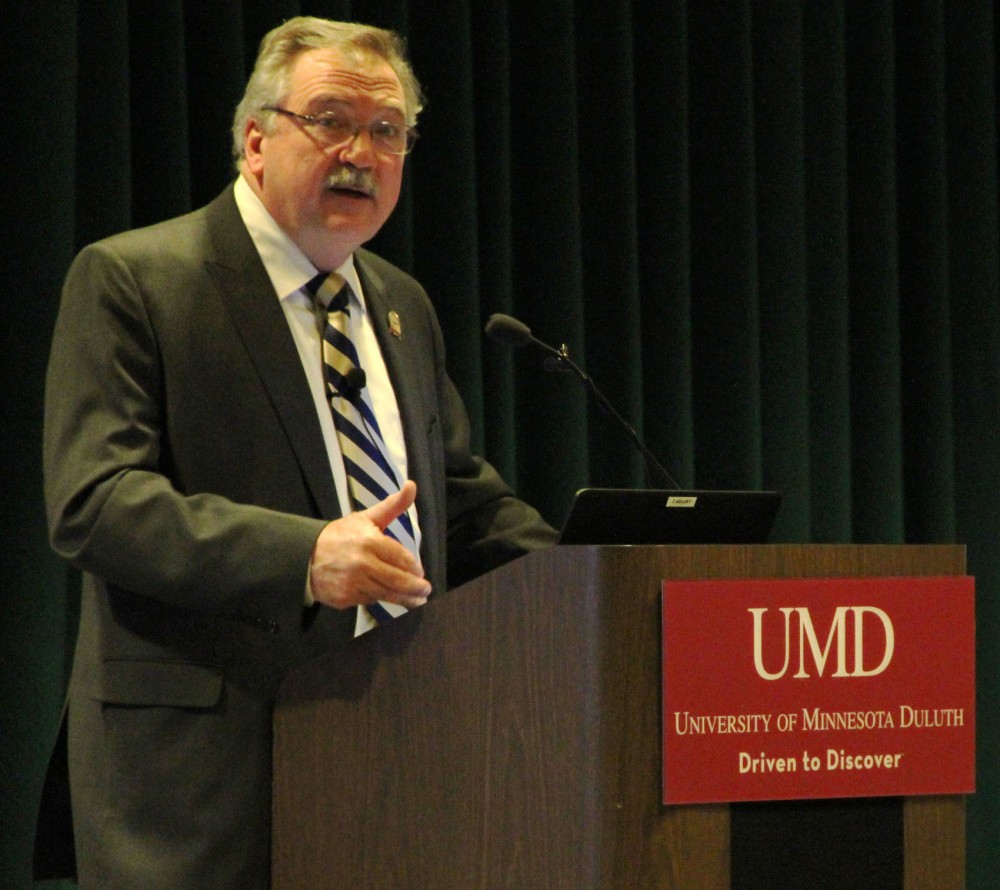The University of Minnesota is fighting to keep the Duluth campus afloat after sinking enrollment numbers and decreased state funding caused a nearly $10 million budget shortfall this budget cycle.
UMD will cut and reorganize faculty and staff, evaluate administrative spending and look at combining departments while strengthening its partnership with the Twin Cities campus to offset the budget woes.
The Duluth campus recently reviewed programs, courses and services to decide where to reduce costs and increase revenues. An internal review of campus spending released last month said that the school could save more than $2.5 million and make nearly $700,000 in new revenue if certain changes were made.
“We will do a number of things differently to achieve these benefits.” UMD Chancellor Lendley Black said in an email to faculty, staff and students last month. “We will implement changes in ways that focus on what we do best and how we can position UMD to become stronger and achieve new heights of excellence.”
UMD could increase profits by bolstering its number of summer school courses, implementing a new student fee for campus transportation and potentially combining departments, according to the review.
Enrollment’s role
Since 2011, UMD’s enrollment has dropped by about 600 students, which University Chief Financial Officer Richard Pfutzenreuter said contributed to the budget shortfall along with the way the school handled budget reductions in previous years.
“Even a change of a few hundred students — it creates a pretty significant added financial challenge to them,” he said.
Declining state funding has also contributed to budget cuts, Pfutzenreuter said. UMD received about $28 million in state funding for fiscal year 2013 — down almost 44 percent from five years ago.
State funding conversations require many moving parts, Pfutzenreuter said. Because tuition dollars are a significant source of funding for the campus, it’s important to address the declining numbers, as it’s something the school can work to control, he said.
UMD Chancellor Lendley Black said the campus will work to increase enrollment to target the budget issue, but the problem won’t be solved in just one year, because that would mean drastic cuts. Proposals for future budget cycles will work to fill the funding gaps.
The University is currently meeting with each academic unit in the five-campus system to assess budget imbalances and where funding is needed. University officials will finalize the budget proposals for next year based on the discussions.
Because the annual process is in its early stages, Pfutzenreuter said it’s not clear where the University will make future cuts.
“Every year there are units that have added stress from changes in enrollment, and that’s not unusual,” Pfutzenreuter said.
The balance of tuition dollars and state funding for a unit’s budget varies across the University’s system, University President Eric Kaler said.
“Our system campuses are an incredibly important and vibrant part of the University of Minnesota,” he said. “They serve different missions. They have different budget structures depending on tuition versus state aid balance.”
In his email, Black said he is working with Kaler and leaders from the Twin Cities campus to fix the budget challenge and doesn’t want to point blame at others for their current situation.
“Clearly, UMD is a jewel in the crown of the University of Minnesota system and they are as committed as we are to advancing our distinctive mission and vision and to keeping UMD strong,” he wrote.


